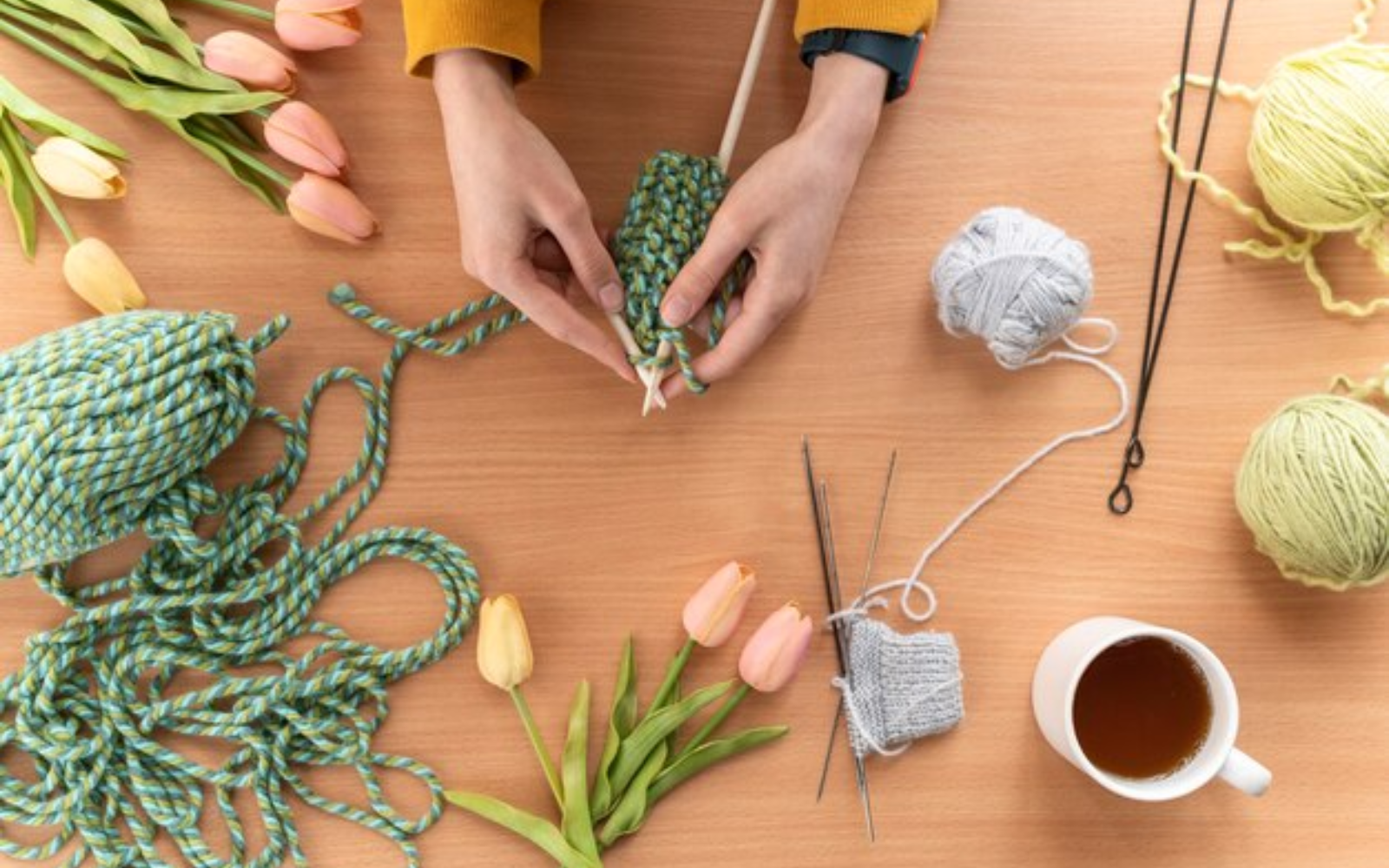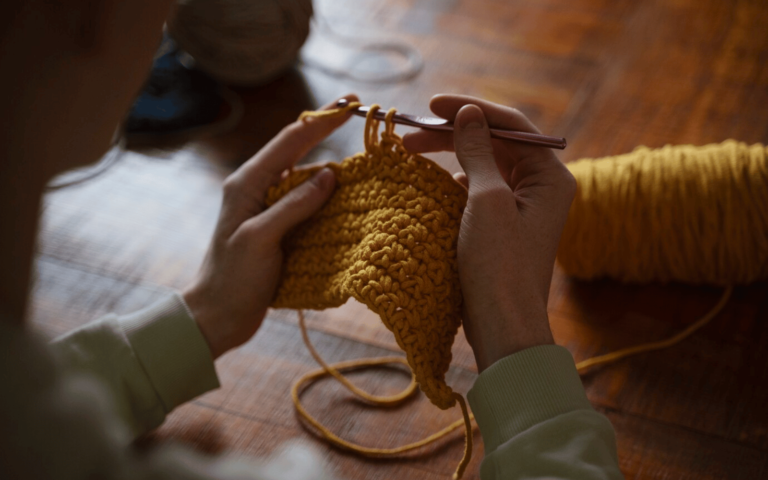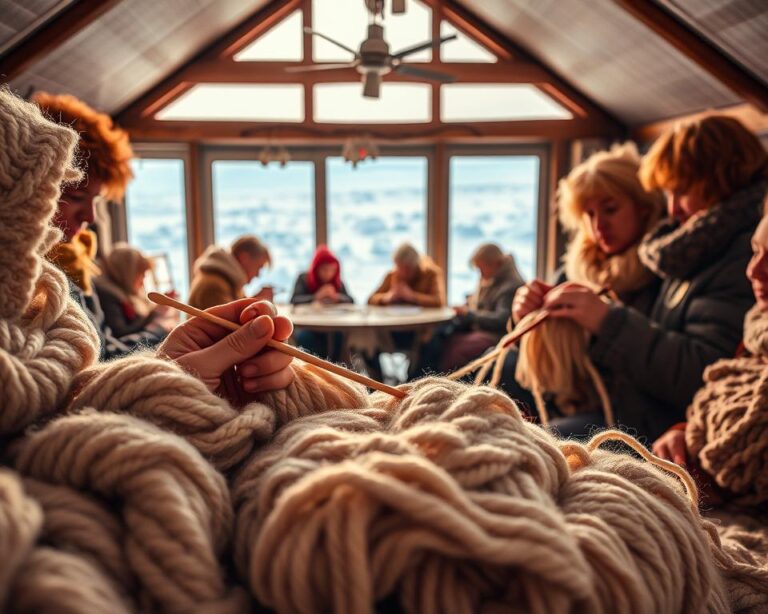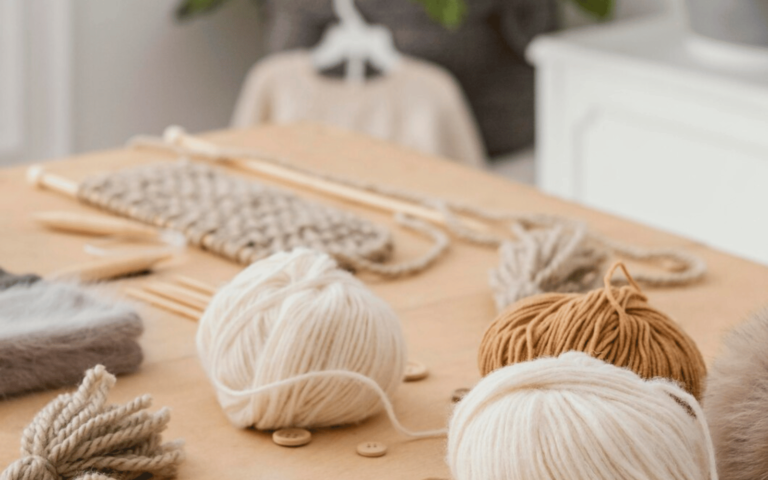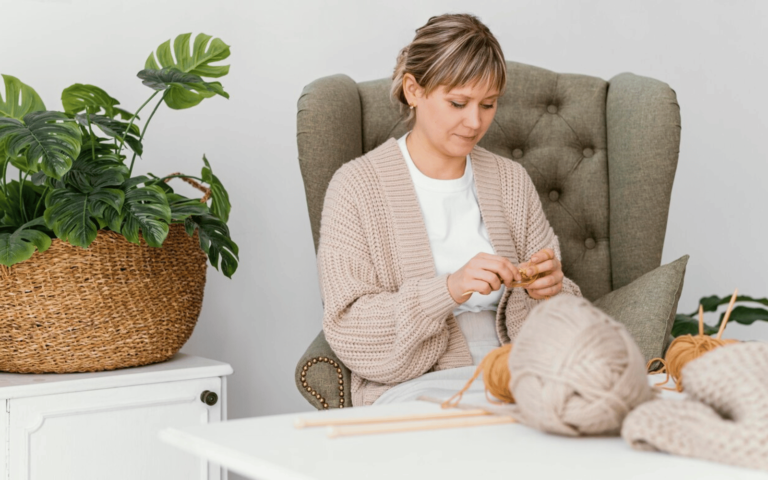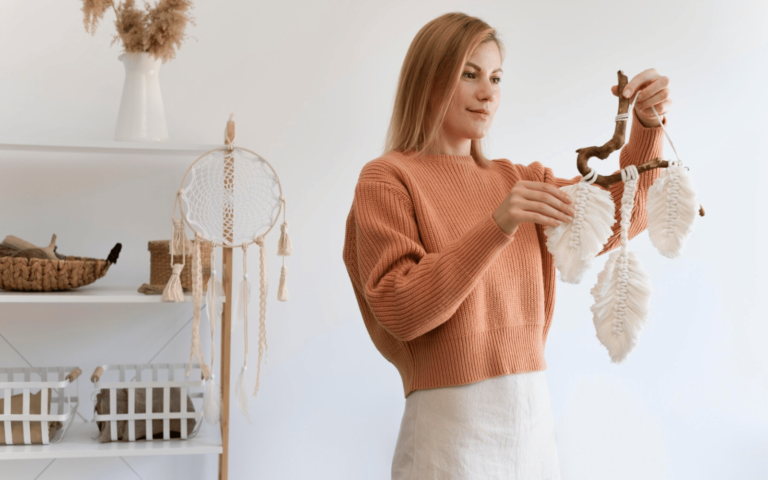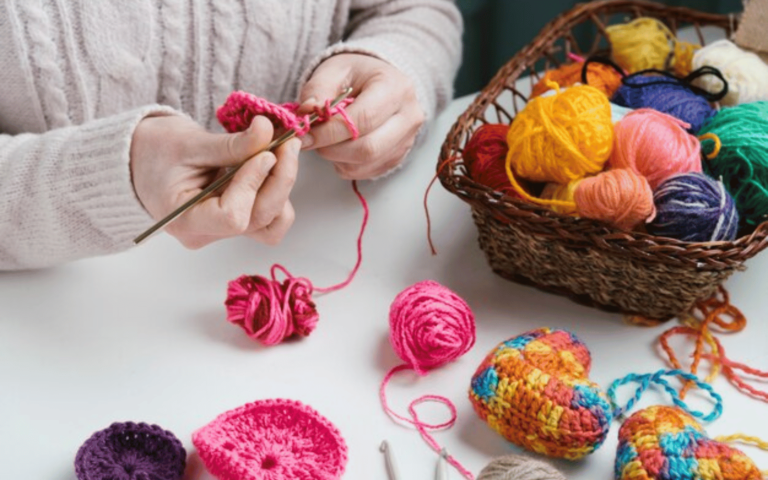Zero Waste Crochet Projects – 2024 Inspiring and Ideas
In recent years, the crafting world has embraced a shift towards sustainability, with zero waste crochet projects leading the charge. This approach to crocheting is not just about making beautiful items; it’s a commitment to environmental stewardship, where every stitch and yarn choice is made with the planet in mind. Zero waste crochet projects challenge crafters to rethink how they use materials, aiming to minimize waste and utilize eco-friendly resources. This movement aligns perfectly with the global push towards reducing our carbon footprint, making each crocheted piece not just a work of art but a statement of sustainable living.
The allure of zero waste crochet projects lies in their dual impact: reducing environmental waste while fostering creativity. Crafters are encouraged to use of recycled, organic, or plant-based yarns, which are less taxing on the environment compared to their synthetic counterparts. These projects offer a tangible way for individuals to contribute to a greener planet, turning the act of crocheting into a meaningful pursuit that benefits both the maker and the Earth. Moreover, zero waste crochet projects provide an excellent platform for education and awareness about sustainability practices. Through workshops, online communities, and social media, crafters share their zero waste creations, spreading knowledge and inspiring others to consider their environmental impact. This communal aspect of zero waste crocheting fosters a sense of unity and purpose among crafters, amplifying the movement’s reach and impact. Transitioning to zero waste crochet projects may seem daunting at first, but it’s a journey that offers immense rewards. Not only do crafters get to enjoy their passion, but they also become part of a larger solution to environmental issues. As this movement grows, it paves the way for a more sustainable future, one stitch at a time.
Understanding the Basics of Zero Waste Crochet
Zero waste crochet is grounded in the philosophy of using resources wisely and minimizing waste. This approach involves careful selection of materials and designing projects that make efficient use of yarn. The goal is to ensure that every scrap of material finds a purpose, whether in the project at hand or in future works. This mindful crafting not only reduces the amount of waste produced but also challenges crafters to be creative and innovative in their designs. The principles of zero waste crochet align closely with those of the zero waste lifestyle, which advocates for reducing what we discard to protect the environment. By choosing sustainable materials and repurposing leftovers, crocheters can significantly reduce their environmental footprint. This practice not only benefits the planet but also enriches the crafting experience, offering a deeper sense of purpose and connection to the natural world.
One of the key components of zero waste crochet is the selection of yarn. Eco-friendly yarns, made from recycled materials or sustainable sources, are preferred for their lower environmental impact. These yarns, available in a wide range of textures and colors, provide an excellent foundation for zero waste projects. Additionally, choosing the right tools, such as bamboo or recycled plastic crochet hooks, further supports sustainable crafting practices. The beauty of zero waste crochet lies in its versatility. Projects can range from simple to complex, allowing crafters of all skill levels to participate. From reusable grocery bags to intricate lace doilies, each project offers an opportunity to reduce waste and promote sustainability. As crafters, the endless possibilities of zero waste crochet, they become advocates for a better planet, inspiring others to take up the cause.
Materials for Zero Waste Crochet Projects
Choosing the right materials is crucial for zero waste crochet projects. Sustainable yarns, such as those made from organic cotton, bamboo, hemp, or recycled fibers, are ideal choices. These materials not only minimize the environmental impact of crocheting but also offer unique qualities, such as durability and softness, enhancing the final product. Crafters are increasingly turning to these eco-friendly options, driven by a desire to combine their love of crocheting with their commitment to sustainability.
In addition to yarn, the tools used in crochet projects can also reflect zero waste principles. Eco-friendly crochet hooks, made from materials like bamboo, recycled plastic, or sustainably harvested wood, are becoming more popular. These tools not only perform well but also align with the ethos of zero waste crafting. Furthermore, using digital patterns or repurposing old books and magazines for patterns can further reduce paper waste, making the entire crocheting process more sustainable.
The availability of zero waste materials has grown in recent years, thanks to the increasing demand for sustainable crafting supplies. Many yarn stores and online retailers now offer a wide range of eco-friendly yarns and tools, making it easier for crafters to source the materials they need for their projects. This accessibility supports the growth of the zero waste crochet movement, encouraging more crafters to make the switch to sustainable materials. Experimenting with different materials and tools is part of the joy of zero waste crochet. Crafters can search the unique properties of various eco-friendly yarns, discovering new textures and techniques along the way. This enriches the crafting experience but also contributes to the development of more innovative and sustainable crochet projects. Whether it’s finding the perfect yarn for a new tote bag or selecting a hook that feels right in hand, the choices made in the materials phase lay the groundwork for zero waste crafting success.
Starting with Zero Waste Crochet: A Guide for Beginners
Embarking on the zero waste crochet journey is an exciting endeavor that begins with a few basic stitches. For beginners, starting small with projects like dishcloths, reusable produce bags, or simple coasters can offer a sense of accomplishment and a practical initiation to sustainable crafting. These projects not only provide a foundation in crochet techniques but also promote the use of eco-friendly practices from the start. Finding resources to learn zero waste crochet is easier than ever, thanks to a plethora of online tutorials, blogs, and community forums dedicated to sustainable crafting. Websites like ByGoldenberry offer step-by-step guides for beginners, focusing on easy projects that make use of sustainable materials. Engaging with these resources can provide invaluable support and inspiration for those new to the craft, helping them to develop their skills while staying true to zero waste principles.
The choice of materials plays a significant role in zero waste crochet, even for beginners. Opting for yarns made from recycled or organic materials is a small but impactful way to support environmental sustainability. Likewise, selecting the right tools, such as eco-friendly crochet hooks, reinforces the commitment to zero waste from the outset. Beginners are encouraged to the variety of sustainable materials available, discovering how different yarns and tools can influence the look and feel of their projects. As beginners progress in their zero waste crochet journey, they’ll find that their projects not only contribute to a more sustainable lifestyle but also bring a unique sense of satisfaction. Completing a project with sustainability in mind adds an extra layer of meaning to the crafting process, making each stitch a small step towards a greener planet. With each project, beginners expand their skills and understanding of zero waste principles, building a foundation for a lifetime of sustainable crafting.
12 Must-Try Zero Waste Crochet Projects
Zero waste crochet projects offer an exciting way to blend creativity with sustainability. From practical household items to personal accessories, there’s no shortage of projects that can help reduce waste and promote eco-friendly living. One of the most popular zero waste projects is the reusable grocery bag, which not only cuts down on plastic use but also serves as a stylish accessory. These bags can be customized in a variety of patterns and colors, making them a fun and functional project for crocheters of all levels. Another must-try project is the crochet dishcloth, which provides an eco-friendly alternative to disposable sponges and paper towels. Made from durable, absorbent yarns, these dishcloths can be used again and again, reducing kitchen waste. Similarly, crochet produce bags are perfect for minimizing the use of plastic bags in the produce aisle. Lightweight and versatile, these bags can be adjusted in size to accommodate different types of fruits and vegetables.
For those interested in personal accessories, zero waste crochet projects like washable makeup remover pads and menstrual pads offer an eco-friendly alternative to disposable products. These projects not only save money in the long run but also contribute to reducing bathroom waste. Additionally, crocheted coffee cozies and water bottle carriers encourage the use of reusable drink containers, further supporting zero waste goals. Beyond practicality, zero waste crochet projects allow crafters to express their creativity and personal style. Whether it’s choosing vibrant colors for a tote bag or experimenting with textures for a dishcloth, each project is an opportunity to make a unique statement. As crafters take on these projects, they not only enhance their skills but also contribute to a culture of sustainability, inspiring others to consider how their hobbies can have a positive impact on the environment.
Step-by-Step Guide to Creating a Zero Waste Crochet Kitchen
The kitchen is a wonderful place to start incorporating zero waste crochet projects, with numerous opportunities to replace disposable items with reusable crocheted alternatives. Crafting your own kitchen sponges, towels, and bowl covers not only reduces waste but also adds a personal touch to your home. Starting with a simple project, like a dishcloth, can teach the basic stitches and techniques required for more complex items. Using absorbent, durable yarns ensures that these items are practical and long-lasting, providing a satisfying and eco-friendly alternative to their disposable counterparts.
Creating a zero waste crochet kitchen extends beyond practicality; it’s about cultivating a sustainable lifestyle that values quality over quantity. Bowl covers, for example, are not only functional but also eliminate the need for plastic wrap. With a variety of stitches and patterns available, crocheters can customize these items to fit their kitchen’s aesthetic, making sustainability both beautiful and functional. Moreover, engaging in zero waste projects promotes mindfulness about consumption and waste, encouraging a deeper appreciation for the items we use daily.
The joy of zero waste crochet in the kitchen also lies in the ability to share these creations with others. Gifting a set of handcrafted dishcloths or a stylish crochet market bag can inspire friends and family to consider their own environmental impact. Additionally, these projects can be a gateway to other sustainable practices in the kitchen, such as composting or using eco-friendly cleaning products. As the heart of the home, a zero waste kitchen can become a centerpiece of a family’s sustainability efforts, showcasing how small changes can make a significant difference.
Ultimately, the transition to a zero waste crochet kitchen is a journey that evolves over time. It requires patience, creativity, and a willingness to try new things. However, the rewards are immense, offering a sense of accomplishment, reduced environmental impact, and the pleasure of using items that are not only handmade but also meaningful. As more people embrace these practices, the collective impact on reducing kitchen waste can be profound, illustrating the power of individual actions in contributing to a larger environmental cause.
Eco-Friendly Crochet for the Home: Beyond the Kitchen
Expanding the principles of zero waste crochet beyond the kitchen opens up a world of possibilities for sustainable home decor and accessories. From crocheted storage baskets to reusable cleaning pads, every room in the house can benefit from eco-friendly crochet projects. These items not only serve practical purposes but also enhance the aesthetic appeal of the home, proving that sustainability and style can go hand in hand. Crafting with eco-friendly yarns and materials ensures that these projects are as green as they are beautiful, embodying the essence of zero waste living.
One of the joys of zero waste crochet for the home is the ability to customize projects to fit personal tastes and needs. Whether it’s choosing colors that match the living room decor for a set of coasters or selecting soft, organic cotton for a baby blanket, the personalization aspect of crochet projects adds a special touch to the home. Additionally, tackling larger projects, such as afghans or rugs, can be a rewarding challenge for more experienced crocheters, offering an opportunity to make a significant sustainable impact on their living spaces.
Engaging in zero waste crochet projects also fosters a sense of community and connection. Sharing patterns, tips, and finished projects with others, whether in person or online, can inspire and motivate individuals to continue sustainable crafting. Workshops, crochet circles, and online forums provide valuable resources for learning new techniques and discovering innovative zero waste projects. This communal aspect of crocheting not only enriches the crafting experience but also builds a supportive network of like-minded individuals committed to sustainability.
Zero Waste Crochet Projects for Personal Use
Crochet projects aimed at personal use offer a unique opportunity to blend functionality with sustainability, providing eco-friendly alternatives to everyday items. From crocheted hats and scarves made with organic yarns to reusable menstrual products and face scrubs, these projects not only reduce waste but also offer a better, more natural option for personal care. Starting with small, simple projects allows individuals to gradually incorporate zero waste principles into their personal routines, making sustainability an integral part of their lifestyle.
The personalization of zero waste crochet projects enhances their appeal and effectiveness. By selecting materials and patterns that suit personal preferences and needs, individuals can create products that are truly tailored to them. This bespoke approach not only increases the likelihood of the items being used regularlybut also ensures they are more sustainable and environmentally friendly. For instance, choosing to crochet a personal tote bag for daily use not only reduces reliance on disposable bags but also allows for customization in size, color, and pattern to perfectly suit individual style and needs. This level of customization makes the move towards zero waste not just a practical choice but also a personal statement.
In addition to practical items, zero waste crochet projects offer the chance to sustainable fashion. Accessories like belts, jewelry, and headbands can be crafted from scrap yarn or sustainable fibers, adding unique elements to personal style while staying true to zero waste principles. These projects challenge the notion that eco-friendly options lack variety or creativity, showcasing instead how sustainability can enhance personal expression. The benefits of choosing zero waste crochet projects for personal use cannot be overstated. By using natural fibers free from harmful chemicals, individuals can avoid the potential irritants found in many commercial products. This is particularly important for items in direct contact with the skin, such as clothing or hygiene products, where the choice of material can significantly impact comfort.
Moreover, engaging in zero waste crochet projects fosters a deeper connection to the items we use daily, imbuing them with personal value that goes beyond their practical application. This connection not only enhances the appreciation for handmade items but also encourages a more mindful approach to consumption, leading to a more sustainable lifestyle overall. As individuals craft items tailored to their needs and values, they weave sustainability into the fabric of their daily lives, creating a personal and environmental harmony that resonates beyond their immediate surroundings.
Advanced Zero Waste Crochet Techniques and Projects
For those who have the basics of crochet and are looking to further their zero waste journey, advanced projects and techniques offer a new level of challenge and creativity. Techniques such as Tunisian crochet, filet crochet, and lacework not only expand a crafter’s skill set but also open up new possibilities for creating intricate, durable items that stand the test of time. These advanced projects, from sophisticated garments to detailed home decor, embody the principles of zero waste by maximizing the utility and aesthetic value of every piece.
In terms of advanced zero waste crochet projects encourages crafters to think innovatively about materials and design. Projects like upcycled fabric rugs or crochet baskets made from cord or t-shirt yarn repurpose waste materials, transforming them into functional and stylish home accessories. This process not only diverts materials from landfills but also challenges the crafter to adapt their techniques to unconventional yarns, fostering a creative problem-solving mindset. Advanced projects also offer the opportunity to delve deeper into the zero waste philosophy, ways to minimize yarn waste through strategic planning and stitch choice. Techniques such as join-as-you-go for motifs or seamless crochet constructions reduce the need for fastenings and finishing, which can often lead to excess waste. By refining these techniques, crafters can produce items that are not only beautiful and complex but also aligned with the goals of sustainability and waste reduction.
Furthermore, engaging in advanced zero waste crochet projects can inspire others within the crafting community. Sharing these projects and the techniques used to create them can foster a culture of sustainability that encourages others to consider their environmental impact. Whether through online tutorials, crochet groups, or craft fairs, showcasing advanced zero waste projects highlights the potential for crochet to contribute to a more sustainable world, inspiring both novices and experienced crafters alike to push the boundaries of what is possible with a hook and yarn.
Community and Sharing: Zero Waste Crochet Projects
The zero waste crochet movement thrives on community and sharing, with crafters coming together to exchange ideas, patterns, and inspiration. Online forums, social media groups, and local crafting circles serve as vibrant hubs for this exchange, fostering a sense of camaraderie and mutual support among individuals committed to sustainability. These communities are invaluable resources for beginners and experienced crafters alike, offering advice, encouragement, and a shared sense of purpose.
Crafting circles and workshops, whether held in person or virtually, provide opportunities for hands-on learning and collaboration. These gatherings can focus on specific zero waste projects, such as making reusable shopping bags or eco-friendly household items, allowing participants to learn new skills while contributing to a collective sustainability effort. The act of coming together to craft not only strengthens community bonds but also amplifies the impact of zero waste initiatives, spreading the message of sustainability through collective action. Moreover, the sharing of zero waste crochet patterns and projects online plays a crucial role in inspiring others to take up the cause. Crafters who document their zero waste journey on blogs, social media, or video platforms offer valuable insights and inspiration to a global audience. These shared experiences can demystify the process of transitioning to zero waste crochet, showing that it is an achievable and rewarding endeavor.
The community aspect of zero waste crochet also extends to the sharing of resources, such as yarn swaps or donations of eco-friendly materials. This practice not only reduces waste but also ensures that materials are used to their fullest potential, supporting the crafting needs of others while minimizing environmental impact. Through these acts of sharing and collaboration, the zero waste crochet movement demonstrates the power of collective action in fostering a more sustainable and connected world. Through sharing, learning, and crafting together, individuals can make a tangible impact on reducing waste and promoting eco-friendly practices. This sense of community not only enriches the crafting experience but also serves as a powerful force for environmental change, showcasing the role of creativity and collaboration in building a more sustainable future.
Overcoming Challenges in Zero Waste Crochet
Embarking on a zero waste crochet journey can present its own set of challenges, from sourcing sustainable materials to adapting patterns to be more eco-friendly. One common hurdle is the availability and cost of eco-friendly yarns, which can be more expensive or harder to find than conventional options. Crafters can overcome this by researching local suppliers, online eco-conscious stores, or participating in yarn swaps to obtain suitable materials without breaking the bank.
Another challenge lies in modifying existing crochet patterns to fit zero waste principles. This may involve altering designs to minimize yarn waste, choosing stitches that create less bulk, or repurposing scraps into new projects. It requires a level of creativity and flexibility, but with practice, crafters can adapt patterns to meet their zero waste goals. Online tutorials, eco-crafting blogs, and zero waste crafting communities can be excellent resources for tips and advice on modifying patterns.
For some, the shift to zero waste crochet requires a change in mindset, especially when it comes to the value and purpose of crafted items. Moving away from a consumer-driven approach to one that prioritizes sustainability and mindfulness can take time. Focusing on the long-term benefits of zero waste crochet, such as reducing environmental impact and fostering a deeper connection to the crafting process, can help maintain motivation and commitment to this sustainable practice. Despite these challenges, the rewards of zero waste crochet are immense. Not only does it offer a way to enjoy crafting in an environmentally responsible manner, but it also provides a sense of accomplishment and purpose. By facing and overcoming these challenges, crafters can contribute to a global movement towards sustainability, inspiring others with their creativity and dedication to a greener planet.
The Future of Zero Waste Crochet Projects
The future of zero waste crochet projects looks bright, with growing interest in sustainable crafting practices and a collective desire to reduce environmental impact. As awareness of the importance of sustainability continues to grow, so too does the innovation and creativity within the zero waste crochet community. Crafters are constantly finding new ways to minimize waste, whether through developing new patterns, repurposing materials, or sharing knowledge and resources with others.
Emerging trends in zero waste crochet include the use of novel, eco-friendly materials, such as yarn made from recycled plastic bottles or plant-based fibers. These materials offer new possibilities for crafting, expanding the range of projects that can be undertaken with a zero waste approach. Additionally, the rise of digital platforms and social media has made it easier than ever to share zero waste crochet projects and techniques, fostering a global community of eco-conscious crafters. The push towards sustainability in crafting also highlights the importance of education and advocacy. By teaching others about the benefits of zero waste crochet and promoting sustainable practices, crafters can play a crucial role in environmental conservation. Workshops, community events, and online courses can help spread the word, encouraging more people to take up zero waste crochet and contribute to a more sustainable world.
Zero waste crochet projects represent a powerful intersection of creativity, sustainability, and community. As crafters continue innovate within this space, they not only enrich their own lives but also contribute to a larger movement towards environmental stewardship. The future of zero waste crochet is not just about the projects themselves, but about the values they embody and the collective impact they can have on the planet. Through continued collaboration, education, and creativity, the zero waste crochet community can help pave the way for a more sustainable and mindful approach to crafting and living.
Embracing Simplicity and Sustainability with Zero Waste Crochet Accessories
In a world increasingly attuned to the impacts of consumerism, zero waste crochet projects offer a meaningful way to merge creativity with environmental consciousness. This approach not only reduces waste but also enhances the aesthetic and practical value of everyday items. Among the various categories of zero waste crochet, accessories stand out as both functional and fashionable elements that can be incorporated into daily life. These projects range from simple items like wristbands and headbands to more intricate pieces such as belts and bags.
Creating crochet accessories involves the utilization of leftover yarns from other projects, ensuring that no materials go to waste. This process not only fosters a sustainable crafting environment but also encourages the crocheter to think innovatively about design and utility. For example, a colorful selection of yarn scraps can be transformed into a vibrant, multi-textured scarf or a chic, patterned clutch that adds a unique touch to any outfit. These accessories not only serve a practical purpose but also act as a statement of eco-friendly fashion.
Moreover, zero waste crochet accessories are perfect for gift-giving or selling at local markets, providing a wonderful opportunity to spread awareness about sustainable practices. They demonstrate that style and sustainability can go hand in hand, appealing to eco-conscious consumers looking for ethically made alternatives. Additionally, the creation of these items offers a relaxing and rewarding experience, allowing crafters to hone their skills while making a positive impact on the environment.
In community settings, workshops on making zero waste crochet accessories can be a great way to bring people together and share skills. These gatherings can serve as a platform for discussing sustainability issues and encouraging a shift towards more responsible consumption habits. Participants leave not only with a tangible product they have created but also with increased knowledge and motivation to pursue sustainable practices in other areas of their lives.
Furthermore, the adaptability of crochet accessories to various skill levels makes them an excellent project for both beginners and experienced crafters. Beginners can start with basic patterns and gradually move to more complex designs as they become more comfortable with their crochet skills. For those with more experience, experimenting with different crochet techniques and incorporating unconventional materials such as recycled fabric strips or plastic yarn can offer new challenges and ways to innovate within the craft.
Zero waste crochet accessories represent a delightful blend of creativity, sustainability, and practicality. They provide an accessible entry point for individuals looking to make a difference through their crafting choices. As more people embrace these practices, the collective impact on reducing waste and promoting sustainability can be significant. Whether as a personal hobby, a community activity, or a small business venture, zero waste crochet projects hold the potential to influence environmental consciousness positively, one stitch at a time.
See More At: woolen8wonders.com

